Blog
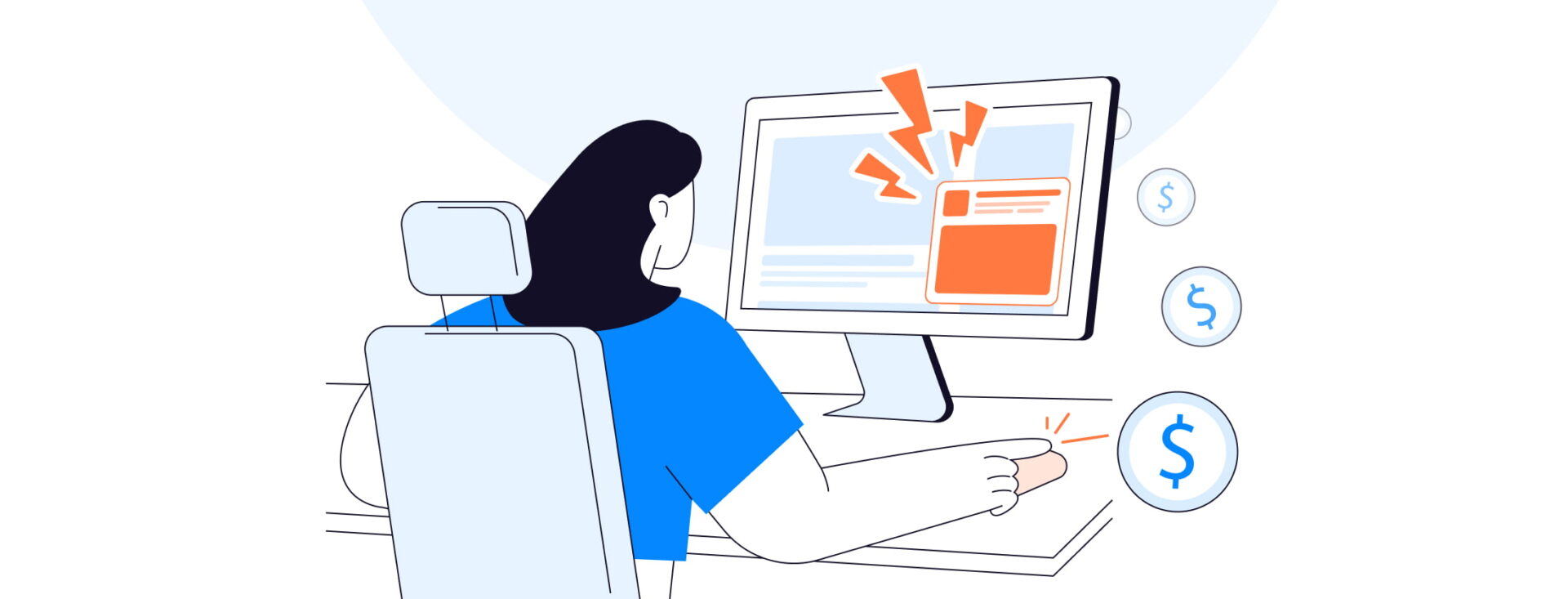
You’ve probably encountered ad headlines that entice you to click immediately. These headlines promise to unleash the secrets of Hollywood stars or lead you to success if you move to the link. In marketing, such a trick is called clickbait.
Could this approach be successfully adopted in affiliate marketing? Yes. This technique often makes push notifications – a popular ad format for affiliate marketers – clickable and noticeable. Many spy tools that aggregate competitor ads reveal the widespread use of clickbait headlines in push notifications and native ads.
Let’s sort out this topic in detail and discuss how to use clickbait ads correctly in this article.
Diving deeper into the clickbait meaning, it makes clear that similar content is designed to “bait” – it’s all about the nature of this phenomenon. Clickbait titles hook users through emotions: curiosity, humor, bewilderment, or even anger.

Brands frequently use clickbait to cut through ad fatigue and capture attention amidst the overwhelming volume of online advertising. This approach helps their content stand out, grabbing users’ interest where traditional ads might go unnoticed.
The dark side of clickbait is that it can often be misleading, creating a disconnect between what’s promised and what’s actually delivered. When a headline exaggerates or omits key details to provoke curiosity, it sets high expectations that the content may not fulfill.
Let’s get straight to a couple of typical clickbait ad examples to give the full picture of this definition:
1. “You Won’t Believe What Happened Next…”
This headline is a classic example of curiosity-driven clickbait. It provides just enough information to intrigue the reader but leaves out key details, prompting them to click to find out more.

2. “10 Shocking Facts About [Topic] That You’ve Never Heard Before!”
This headline uses a combination of “shocking” and “never heard before” to appeal to people’s desire for novelty and surprise. On top of that, listicles are especially popular because they promise content that can be easily digested because of their well-organized structure. People are often curious to know suprising things about celebrities and beauty trends.
Examples of clickbait ads:
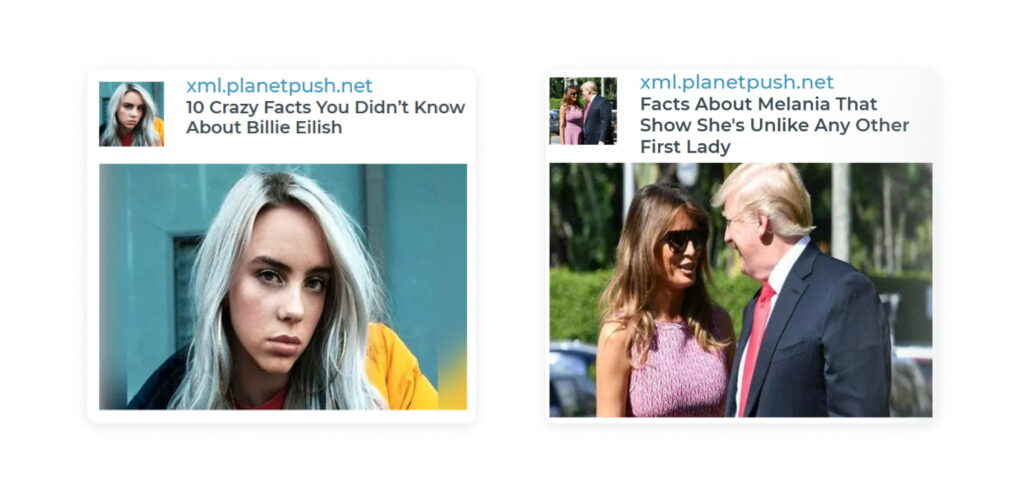
3. “Top 3 Things Successful People Do Every Morning”
This headline attracts readers interested in self-improvement or success. The implication is that by learning these “top things,” readers could potentially become more successful themselves. The number (3) suggests brevity, making it easy to consume quickly, which is appealing for busy individuals.
4. “Doctors Hate This Trick for Losing Weight Fast!”
Here, the headline creates an air of secrecy and exclusivity, suggesting there’s a hidden method that only a select few know about. The mention of “doctors hate this” implies that the information is unconventional and even controversial, which makes it more intriguing.
Сlickbait ideas:

This approach is particularly effective for health-related clickbait, where people are often searching for quick solutions. A certain vertical in affiliate marketing that perfectly matches with such headlines is Nutra.
5. “This Simple Hack Could Save You Thousands!”
The promise of saving a substantial amount of money with a “simple hack” makes this headline irresistible to readers looking for easy solutions. “Hack” implies a shortcut or insider knowledge, which appeals to readers’ desire to learn something that could have a significant impact on their lives without much effort.
Examples of clickbait ads:
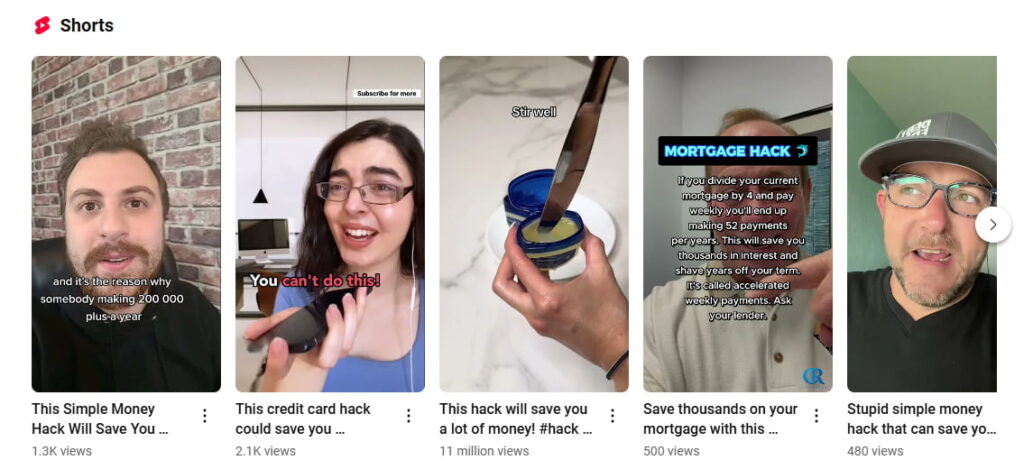
Niches in affiliate marketing that revolve around saving money and making money altogether include Finance (Forex, Loans, MFO, etc.) and Cryptocurrencies.
6. “They Tried This, and You Won’t Believe the Results!”
This headline uses a combination of novelty and the curiosity gap. The phrase “you won’t believe the results” builds anticipation, encouraging the reader to find out what happened. It also leaves out specific details about what was tried and what the results were, creating intrigue.
Examples of clickbait ads:
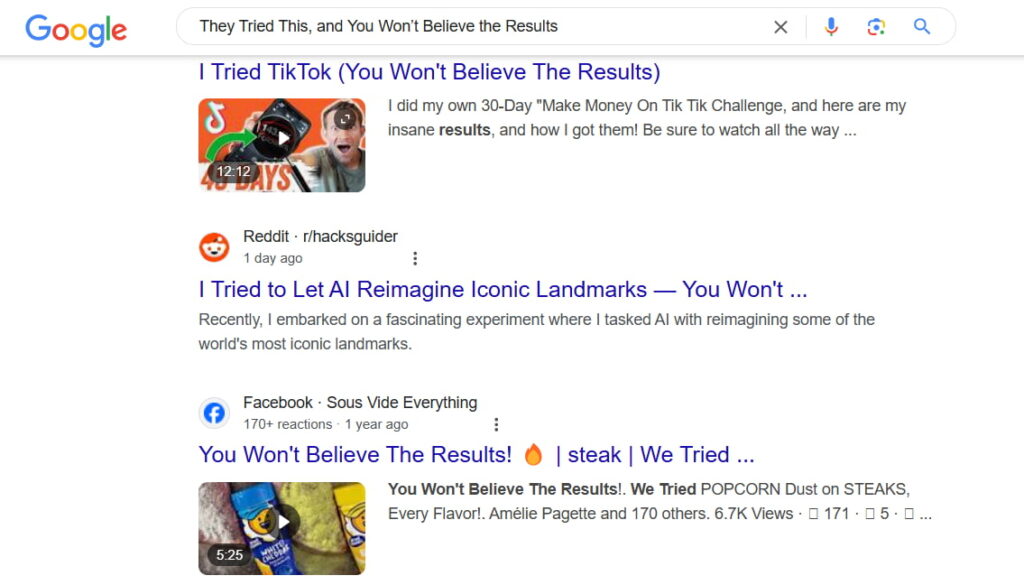
The techniques can generate a lot of conversions with offers across many verticals: Gambling, Betting, Nutra, Finance, Sweepstakes, News & Content.
7. “The 5 Biggest Mistakes Everyone Makes with [Common Activity]”
This headline plays on people’s fear of doing something wrong. By highlighting “biggest mistakes,” it implies that the reader could be unknowingly making these errors and losing out. It’s especially effective because it prompts readers to click to ensure they’re not missing something important.
Сlickbait ideas:
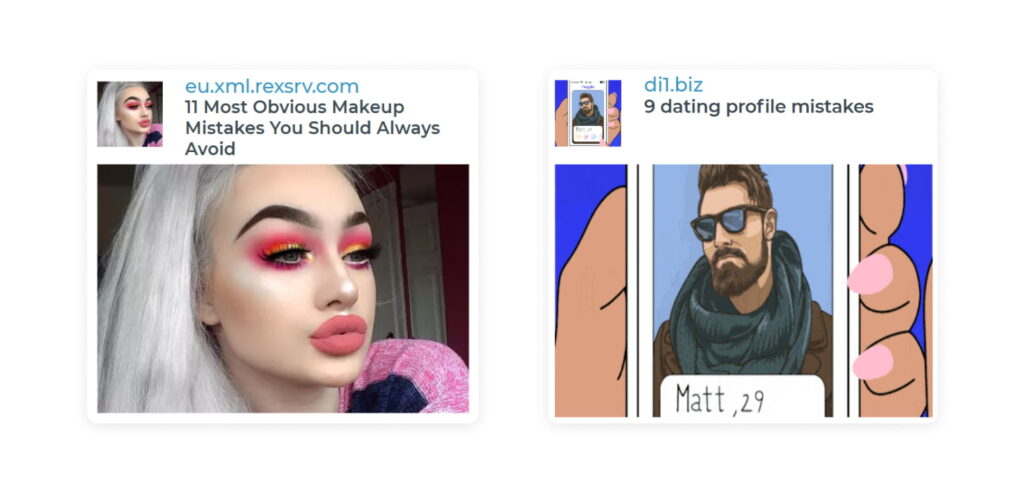
Using words like “mistakes,” “secrets,” and “hacks” is highly effective across various niches, as these terms tap into the universal FOMO effect (“fear of missing out”). Whether in finance, health, tech, or lifestyle content, such language triggers readers’ curiosity and desire to avoid pitfalls or gain exclusive insights.
8. “Is [Popular Product/Person] Really Worth the Hype? Here’s the Truth.”
This headline capitalizes on the popularity of a product or person and suggests an insider perspective or revelation. It appeals to readers who might be skeptical or undecided about the product and want validation.
Examples of clickbait ads:
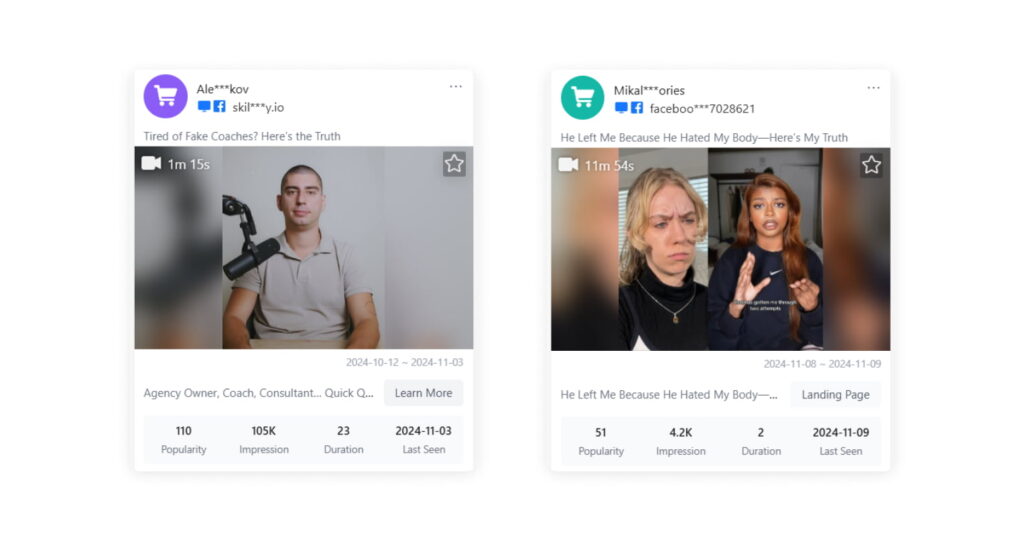
9. “See How This One Simple Change Transformed Their Life!”
This headline is one of the effective clickbait weight loss ad examples because it promises a significant outcome from a single, seemingly easy action. It implies that readers can achieve a similar transformation with minimal effort, which is highly appealing. The vagueness of “one simple change” also adds to the curiosity, making people click to find out what the change is.

10. “What They Don’t Tell You About [Job, Industry, Lifestyle]…”
This headline suggests hidden or secret information, playing into people’s fear of missing out on important insights. It makes readers feel like they’re gaining exclusive access to something not commonly known, which increases their urge to click.
All of these examples are successful because they:
These techniques make the content feel valuable, even before readers click through, which is the core strength of effective clickbait.
To use clickbait effectively without disappointing or misleading your audience, consider the following best practices:
1. Deliver on your promise. Avoid sensational headlines that overpromise and underdeliver. If your headline promises a “secret strategy,” make sure there’s a genuine takeaway or valuable insight that fulfills this claim. An honest, intriguing headline builds curiosity and keeps readers engaged;
2. Use curiosity, not deception. Phrasing headlines to evoke curiosity without misrepresenting facts is key. For example, instead of “(3) Virus on your phone⚠️” write the following ad description: “Virus might be on your phone”. This phrasing hints at valuable insights without misleading the reader;
3. Focus on value-driven content. If you’re using terms like “hacks” or “secrets,” ensure the content genuinely helps the reader. Content that solves a problem or adds value to the reader’s life will feel worthwhile. This not only encourages clicks but also leaves readers satisfied;
4. Use emotional triggers thoughtfully. Headlines that trigger emotions like surprise, excitement, or urgency can be effective, but they should align with the content. For instance, “5 Mistakes Costing You Money” grabs attention, but make sure these mistakes are relevant and realistic to your target audience;
5. Build credibility over time. Audiences are more likely to click on sensational headlines from sources they trust. As you consistently deliver valuable content, your audience will trust your clickbait-style headlines, knowing they lead to quality information. This trust can drive long-term engagement;
6. Avoid overuse of clickbait language. Using clickbait on every step of your lead magnet can cause audience burnout. Reserve it for particularly engaging or informative content, while keeping other headlines more straightforward. This balance will make your clickbait titles more impactful and trustworthy.
When done right, clickbait can attract attention and drive clicks without misleading readers. Focus on delivering real value, use curiosity ethically, and stay consistent in quality. This approach will not only boost your engagement but also foster long-term trust with your audience.
Our clickbait ad examples can help you use clickbait correctly and avoid bans on nearly any platform. However, we strongly advise reviewing the guidelines of each platform you plan to work with. Requirements can vary depending on the traffic source. For instance, some platforms prohibit mentioning celebrities, while others have different restrictions. If you’re promoting through Google UAC, for example, limitations might apply based on the GEOs you’re targeting. In contrast, push ad networks have fewer restrictions than Google, FB and other social media networks.
You’ve probably encountered ad headlines that entice you to click immediately. These headlines promise to unleash the secrets of Hollywood stars or lead you to success if you move to the link. In marketing, such a trick is called clickbait.
Could this approach be successfully adopted in affiliate marketing? Yes. This technique often makes push notifications – a popular ad format for affiliate marketers – clickable and noticeable. Many spy tools that aggregate competitor ads reveal the widespread use of clickbait headlines in push notifications and native ads.
Let’s sort out this topic in detail and discuss how to use clickbait ads correctly in this article.
Diving deeper into the clickbait meaning, it makes clear that similar content is designed to “bait” – it’s all about the nature of this phenomenon. Clickbait titles hook users through emotions: curiosity, humor, bewilderment, or even anger.

Brands frequently use clickbait to cut through ad fatigue and capture attention amidst the overwhelming volume of online advertising. This approach helps their content stand out, grabbing users’ interest where traditional ads might go unnoticed.
The dark side of clickbait is that it can often be misleading, creating a disconnect between what’s promised and what’s actually delivered. When a headline exaggerates or omits key details to provoke curiosity, it sets high expectations that the content may not fulfill.
Let’s get straight to a couple of typical clickbait ad examples to give the full picture of this definition:
1. “You Won’t Believe What Happened Next…”
This headline is a classic example of curiosity-driven clickbait. It provides just enough information to intrigue the reader but leaves out key details, prompting them to click to find out more.

2. “10 Shocking Facts About [Topic] That You’ve Never Heard Before!”
This headline uses a combination of “shocking” and “never heard before” to appeal to people’s desire for novelty and surprise. On top of that, listicles are especially popular because they promise content that can be easily digested because of their well-organized structure. People are often curious to know suprising things about celebrities and beauty trends.
Examples of clickbait ads:

3. “Top 3 Things Successful People Do Every Morning”
This headline attracts readers interested in self-improvement or success. The implication is that by learning these “top things,” readers could potentially become more successful themselves. The number (3) suggests brevity, making it easy to consume quickly, which is appealing for busy individuals.
4. “Doctors Hate This Trick for Losing Weight Fast!”
Here, the headline creates an air of secrecy and exclusivity, suggesting there’s a hidden method that only a select few know about. The mention of “doctors hate this” implies that the information is unconventional and even controversial, which makes it more intriguing.
Сlickbait ideas:

This approach is particularly effective for health-related clickbait, where people are often searching for quick solutions. A certain vertical in affiliate marketing that perfectly matches with such headlines is Nutra.
5. “This Simple Hack Could Save You Thousands!”
The promise of saving a substantial amount of money with a “simple hack” makes this headline irresistible to readers looking for easy solutions. “Hack” implies a shortcut or insider knowledge, which appeals to readers’ desire to learn something that could have a significant impact on their lives without much effort.
Examples of clickbait ads:

Niches in affiliate marketing that revolve around saving money and making money altogether include Finance (Forex, Loans, MFO, etc.) and Cryptocurrencies.
6. “They Tried This, and You Won’t Believe the Results!”
This headline uses a combination of novelty and the curiosity gap. The phrase “you won’t believe the results” builds anticipation, encouraging the reader to find out what happened. It also leaves out specific details about what was tried and what the results were, creating intrigue.
Examples of clickbait ads:

The techniques can generate a lot of conversions with offers across many verticals: Gambling, Betting, Nutra, Finance, Sweepstakes, News & Content.
7. “The 5 Biggest Mistakes Everyone Makes with [Common Activity]”
This headline plays on people’s fear of doing something wrong. By highlighting “biggest mistakes,” it implies that the reader could be unknowingly making these errors and losing out. It’s especially effective because it prompts readers to click to ensure they’re not missing something important.
Сlickbait ideas:

Using words like “mistakes,” “secrets,” and “hacks” is highly effective across various niches, as these terms tap into the universal FOMO effect (“fear of missing out”). Whether in finance, health, tech, or lifestyle content, such language triggers readers’ curiosity and desire to avoid pitfalls or gain exclusive insights.
8. “Is [Popular Product/Person] Really Worth the Hype? Here’s the Truth.”
This headline capitalizes on the popularity of a product or person and suggests an insider perspective or revelation. It appeals to readers who might be skeptical or undecided about the product and want validation.
Examples of clickbait ads:

9. “See How This One Simple Change Transformed Their Life!”
This headline is one of the effective clickbait weight loss ad examples because it promises a significant outcome from a single, seemingly easy action. It implies that readers can achieve a similar transformation with minimal effort, which is highly appealing. The vagueness of “one simple change” also adds to the curiosity, making people click to find out what the change is.

10. “What They Don’t Tell You About [Job, Industry, Lifestyle]…”
This headline suggests hidden or secret information, playing into people’s fear of missing out on important insights. It makes readers feel like they’re gaining exclusive access to something not commonly known, which increases their urge to click.
All of these examples are successful because they:
These techniques make the content feel valuable, even before readers click through, which is the core strength of effective clickbait.
To use clickbait effectively without disappointing or misleading your audience, consider the following best practices:
1. Deliver on your promise. Avoid sensational headlines that overpromise and underdeliver. If your headline promises a “secret strategy,” make sure there’s a genuine takeaway or valuable insight that fulfills this claim. An honest, intriguing headline builds curiosity and keeps readers engaged;
2. Use curiosity, not deception. Phrasing headlines to evoke curiosity without misrepresenting facts is key. For example, instead of “(3) Virus on your phone⚠️” write the following ad description: “Virus might be on your phone”. This phrasing hints at valuable insights without misleading the reader;
3. Focus on value-driven content. If you’re using terms like “hacks” or “secrets,” ensure the content genuinely helps the reader. Content that solves a problem or adds value to the reader’s life will feel worthwhile. This not only encourages clicks but also leaves readers satisfied;
4. Use emotional triggers thoughtfully. Headlines that trigger emotions like surprise, excitement, or urgency can be effective, but they should align with the content. For instance, “5 Mistakes Costing You Money” grabs attention, but make sure these mistakes are relevant and realistic to your target audience;
5. Build credibility over time. Audiences are more likely to click on sensational headlines from sources they trust. As you consistently deliver valuable content, your audience will trust your clickbait-style headlines, knowing they lead to quality information. This trust can drive long-term engagement;
6. Avoid overuse of clickbait language. Using clickbait on every step of your lead magnet can cause audience burnout. Reserve it for particularly engaging or informative content, while keeping other headlines more straightforward. This balance will make your clickbait titles more impactful and trustworthy.
When done right, clickbait can attract attention and drive clicks without misleading readers. Focus on delivering real value, use curiosity ethically, and stay consistent in quality. This approach will not only boost your engagement but also foster long-term trust with your audience.
Our clickbait ad examples can help you use clickbait correctly and avoid bans on nearly any platform. However, we strongly advise reviewing the guidelines of each platform you plan to work with. Requirements can vary depending on the traffic source. For instance, some platforms prohibit mentioning celebrities, while others have different restrictions. If you’re promoting through Google UAC, for example, limitations might apply based on the GEOs you’re targeting. In contrast, push ad networks have fewer restrictions than Google, FB and other social media networks.
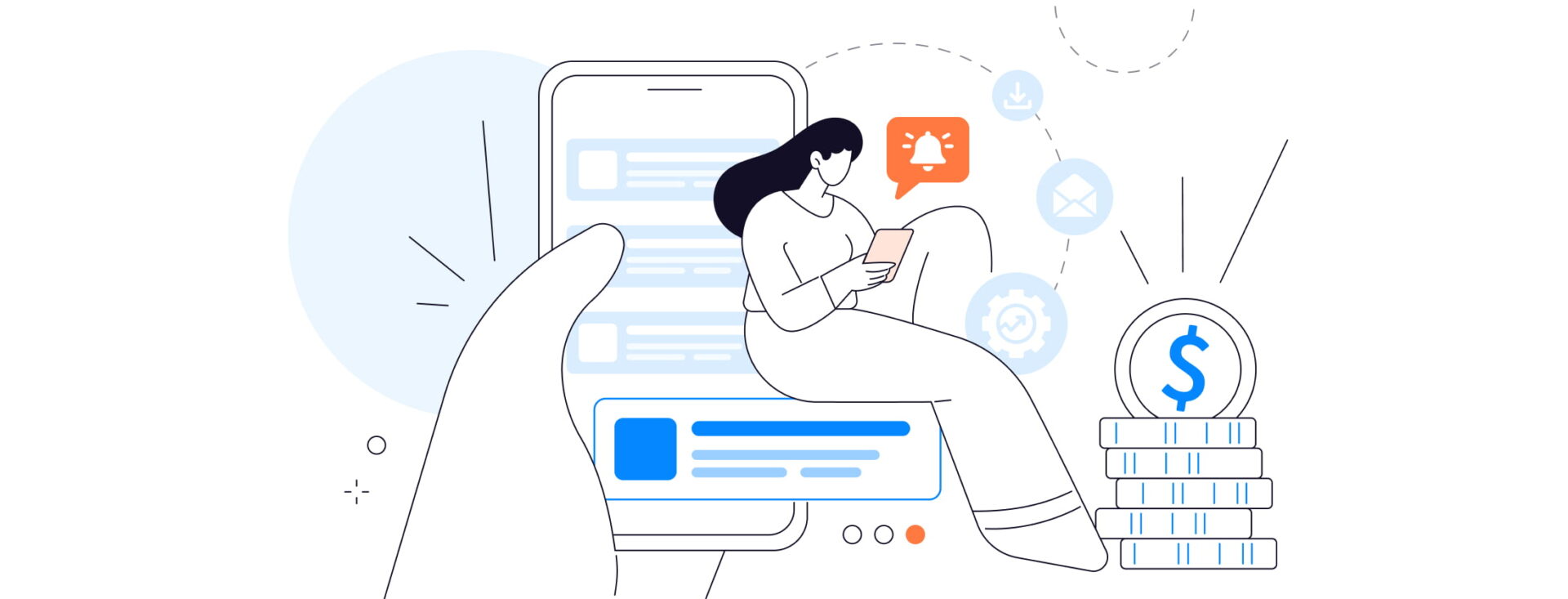
Blog
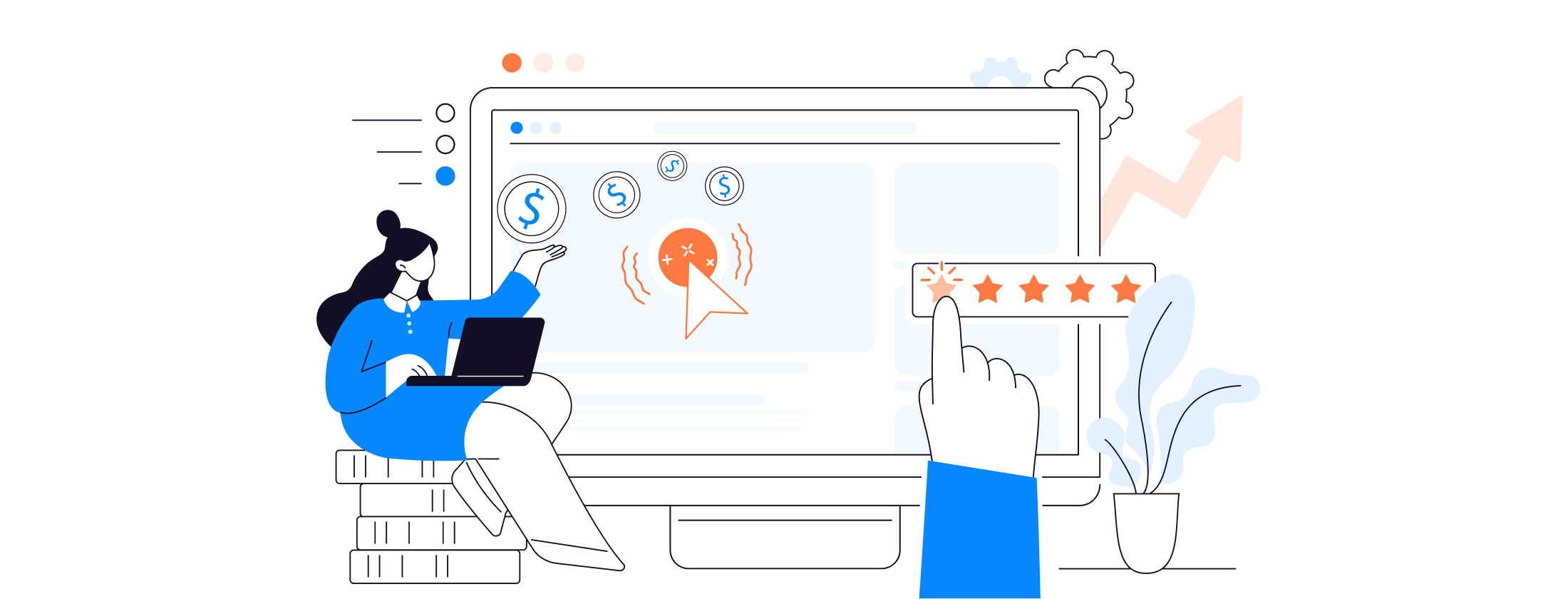
Blog